Mary Volmer's Blog, page 3
June 30, 2017
History's Lost Voices: Olympia Brown
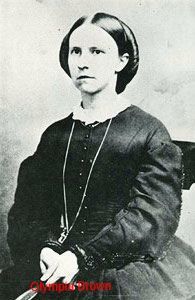
“Reformers are often deceived by a kind of mirage. They suppose victory at hand when, in reality, generations are yet to pass before it can be realized.”
Reverend Olympia Brown, Acquaintances, Old And New Among Reformers (1911).
Olympia Brown, (1835-1926) was the first female pastor of the Unitarian Universalist Church. Although she does not make an appearance in Reliance, Illinois, her ideas and insights are threaded throughout. Reading her work, alongside biographies of her life, gave me a deep respect and a greater understanding of the hardships faced by professional women and women reformers in the nineteenth century. It also gave me a broader perspective on the ongoing struggles for justice and equality that reformers of all races and genders to face today. Laws are easier to change, she reminds us, than ingrained biases and convenient assumptions. And any right won, if taken for granted, can be stripped away.
Here’s a short summary of Brown’s life in ministry, to whet your interest. To learn more about this remarkable woman, I recommend, Olympia Brown: The Battle for Equality by Charlotte Cote.
Published on June 30, 2017 14:18
April 11, 2017
Reliance, Illinois - Paperback Release!
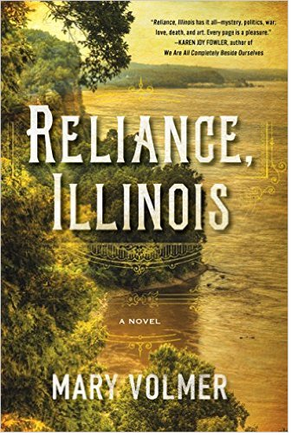
Reliance, Illinois is out in paperback! I celebrated at my desk this morning, surrounded by notes and early drafts of the next book, then ventured into the village this afternoon for a treat and a fancy coffee.
Miss Rose, one of the book's formidable female characters, would have planned a grand event to commemorate the day. She would have worn her most ostentatious hat, and sang the novel's virtues to the world (exaggerating some, I'm sure).
Feel free to click here, or here, if you want to know what other people have said about the book. I'd prefer to stand to the side, and let the story speak for itself. D.H. Laurence said, "Never trust the teller, trust the tale." I give you the tale - Reliance, Illinois - new in paperback.
Published on April 11, 2017 02:09
December 30, 2016
Joyce Wycoff: Where Do Writing Ideas Come From?
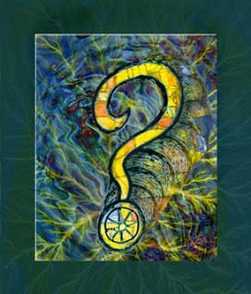 Tired of 2016? Why not get a jump on 2017 by registering for the 2017 Sierra Writers' Conference and by following this blog series, curated by Joyce Wycoff. The series features writing advice from Catharine Bramkamp, Bob Jenkins, Kim Culbertson, and myself.
Tired of 2016? Why not get a jump on 2017 by registering for the 2017 Sierra Writers' Conference and by following this blog series, curated by Joyce Wycoff. The series features writing advice from Catharine Bramkamp, Bob Jenkins, Kim Culbertson, and myself.Here is Joyce Wycoff's first offering! Well worth a read:
“Where did you get your idea?” It’s a common question, and the easy answer is: everywhere!
The longer, and more interesting answer, can be explained using specific examples. When I started writing what turned out to be Sarana’s Gift , the idea literally came out of nowhere. I had decided I was going to write a novel, regardless of the fact that I couldn’t write fiction. (I had one, long-ago, half-finished novel as proof.) But, fact or not, I decided to go for it.
However, as I was researching and thinking about the novel which was going to be set in San Francisco, something else showed up. Suddenly, in my mind, a young girl was on a silver-white horse, galloping through a forest, running from something. Weird. But, I decided to get it down on paper so it would leave me alone.
I was curious though, what was she running from? Following that curiosity led me into the jungles of the Yucatan and through a series of challenges that had to be faced with no weapons or superpowers. (LESSON: follow strange stuff when it shows up.)
After that, deciding that perhaps I could write fiction, I started looking for an idea. I wanted to write about a mature woman, an ordinary woman whose life turns toward the less than ordinary. She would live in an ordinary town in Oregon and have an ordinary job as a portrait photographer.
Where do ideas come from?
Then, I needed a setting … someplace I would like to visit. After a couple of “nice tries,” I remembered an amazing video I had seen about the reintroduction of wolves to Yellowstone (highly recommended: How Wolves Change Rivers .) It had haunted me when I saw it the first time and, watching it again, I knew it was right. Thus, Yellowstone Howling was born (and is about half done). (LESSON: follow what sparks your own interest.)
I asked some of the authors speaking at Sierra Writers’ Conference 2017 to share their stories of what sparks their books. I am in awe of their answers and their commitment to making a difference in the world with their writing.
Read response from Kim Culbertson, Mark Wideranders, and yours truly here:
Published on December 30, 2016 13:37
December 22, 2016
Bringing Story Ideas Home
[image error] Tired of 2016? Why not get a jump on 2017 by registering for the 2017 Sierra Writers' Conference and by following this blog series, curated by Joyce Wycoff. The series features writing advice from Catharine Bramkamp, Bob Jenkins, Kim Culbertson, and myself.
This guest post comes from Bob Jenkins, one of America’s distinguished storytellers. Twice featured as a headliner for the National Storytelling Festival in Jonesboro, Tennessee, he performed in circus tents for thousands of story lovers.
He lives in the Sierra Foothills of California where the events of Azriel Dancer unfold.
Read his post on the Sierra Writers' Confence Page.
This guest post comes from Bob Jenkins, one of America’s distinguished storytellers. Twice featured as a headliner for the National Storytelling Festival in Jonesboro, Tennessee, he performed in circus tents for thousands of story lovers.
He lives in the Sierra Foothills of California where the events of Azriel Dancer unfold.
Read his post on the Sierra Writers' Confence Page.
Published on December 22, 2016 18:51
December 9, 2016
License to Write: Part 3 Your License to Write
 In the first post of this series, I wrote about the importance of claiming the title "writer." Last post was about mastering the rules of the craft, and finding space and time to work. Today we'll talk about getting it wrong, and issue your License to Write!
In the first post of this series, I wrote about the importance of claiming the title "writer." Last post was about mastering the rules of the craft, and finding space and time to work. Today we'll talk about getting it wrong, and issue your License to Write!You Are Going to Get it Wrong
Every year at least one student comes to me despairing because her story, or essay, or poem, won’t do what she intended. Don’t despair! Your first conception will evolve. Your plan will change. You are not entirely in control of your own material, and thank goodness, because what we intend in the first flush of inspiration is rarely as interesting or as original as what emerges unconsciously, with labor, over time. Feel free to outline and story board—I love to outline—so long as you understand your job is not to control, but to serve the story as it emerges, and to shape it.
And yes, you will get it wrong.
In an essay called “Shitty First Drafts,” Anne Lamott writes: “Almost all good writing begins with terrible first efforts. You need to start somewhere. Start by getting something -- anything -- down on paper. A friend of mine says that the first draft is the down draft -- you just get it down. The second draft is the up draft -- you fix it up.”
Says coaching legend John Wooden: "If you're not making mistakes, then you're not doing anything. I'm positive that a doer makes mistakes."
“We learn by doing,” says Aristotle, “Men become builders by building houses and harpists by playing the harp.”
Writers become writers by writing, by writing poorly, by re-visioning and rewriting.
You will get it wrong. Getting it wrong is the first step—the most important step—toward getting it right. Don’t despair over those dead ends and discarded pages. Words are the world’s most renewable resource! You cannot waste words.
Think of those discarded pages, all those hours of work, all those wrong turns as compost. That smelly heap of banana peels, pizza crusts, egg shells are what remains of material that nourished you. It is the soil out of which your book will grow. Rejoice in that.
License to Write
Your vision will change. You get it wrong again and again, before you get it right. The doubt you feel when you’re stuck, when you’re dejected is natural and as necessary as the faith you’ll need to keep going.
If you’ll indulge me one more athletic analogy: novel writing is an endurance sport, a marathon. Think of your faith and doubt as equipment you need to compete. Think of them as running shoes: right shoe faith; left shoe doubt. Doubt keeps you honest, faith keep you going.
Keep going. Remind yourself why you write—why you are writing this book. And if you need written permission to pursue this mad obsession, click on this link and print the document. This my friends, my fellow writers, is a license to write. It is your license to write.
Now, pay attention because this is important. ..
Read the rest on the Sierra Writers Conference Blog:
(Tired of 2016? Why not get a jump on 2017 by registering for the 2017 Sierra Writers' Conference and by following this blog series, curated by Joyce Wycoff. The series features writing advice from Catharine Bramkamp, Bob Jenkins, Kim Culbertson, and myself.)
Published on December 09, 2016 16:20
License to Write: Part 2 (of 3)
 Last post, I wrote about the importance of claiming the title "writer." Today: learning the rules of your craft and finding space to work.
Last post, I wrote about the importance of claiming the title "writer." Today: learning the rules of your craft and finding space to work.Learn the Rules
Ever seen tennis played? Imagine a tennis court. Now, take away the net, the boundary lines, and the rackets. What’s left?
Tennis and fiction are governed by rules and conventions. How can a tennis player compete with no racket, net, or boundary lines? How can a writer share her vision without at least a rudimentary understanding of point of view, story, sentence structure, or the conventions of genre? Maybe you fancy yourself a rebel, determined to break rules and challenge form. Great, but you first must know the rules to break them.
In high school, I coached a youth basketball team of 9 and 10-year-old girls. I remember walking into the high school multipurpose room—imagine two temporary baskets propped on either end, little girls in gym short ping-ponging here and there, and the smell—you know the smell—rotting bananas, corn dogs, lemon-scented cleaning fluid.
“Ok!” I shouted, blowing my whistle. “Everyone on the baseline!"
One little girl scrambled into place, the rest looked sideways up at me. What on earth was a baseline?My detailed schedule of drills, useless. They needed rules, the most basic rules, before they could play. So we made a game out of learning and raced from baseline to half court, to sideline in a squealing frenzy.
Granted, this isn’t a perfect analogy for writers. Even if you have never written anything but a grocery list and never studied the conventions of the craft, you already know more than you think because you have grown up with stories, and because you read widely and ceaselessly. Right? You’re already aware of how stories affect you. How exciting to learn to create that effect!
How to play.
Silly Video: How to play tennis without a racket ... or a ball.
Community and Solitude
Be active within a community, literary or otherwise, but don’t mistake living in literary circles with literary work. Literary work, "needs solitude. It needs concentration without interruption,” says poet Mary Oliver in her essay “Of Power and Time.” “It needs the whole sky to fly in and no eye watching until it comes to that certainty which it aspires to, but does not necessarily have at once. Privacy…a place apart.”
This place apart is not just a physical space, but also a space inside of you, a sacred space of “otherworldly awareness” from which creativity rises.
Finding this double solitude in which to work—the space within and the space without—has always been difficult...
Read the rest on the Sierra Writers Conference Blog:
(Tired of 2016? Why not get a jump on 2017 by registering for the 2017 Sierra Writers' Conference and by following this blog series, curated by Joyce Wycoff. The series features writing advice from Catharine Bramkamp, Bob Jenkins, Kim Culbertson, and myself.)
Published on December 09, 2016 16:07
License to Write: Part I (of 3)
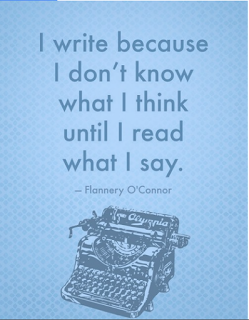
Adapted from a 2016 NaNoWriMo lecture at the beautiful Livermore Public Library.
If you write, you are a writer.
It doesn’t matter whether you’ve published, or just have begun to put stories together. Maybe you desperately want to write, but don’t yet have a story. Maybe you have a story to tell, but don’t yet know how. Maybe you have a story, but can’t imagine anyone else would care about it. In the next three blog posts, I hope to give you license to overcome these doubts and tools to cultivate the faith you’ll need to persevere and survive the process of writing a book.
Answer the question: Why Write?
This is a question only you can answer, a question you must answer.
I can tell you why I started: I write because I love to read. Because I love adventure, but detest risk. I write because stories allow me to inhabit lives beyond my own and connect me to people past and present. Stories make me vulnerable and grateful for my own humanity. I write because I love language, because characters announce themselves to me, because I’m good at it. I write when I’m angry, when I’m sad, when I’m baffled.
Why do you write? Why are you writing this book?
Read the rest on the Sierra Writers Conference Blog:
(Tired of 2016? Why not get a jump on 2017 by registering for the 2017 Sierra Writers' Conference and by following this blog series, curated by Joyce Wycoff. The series features writing advice from Catharine Bramkamp, Bob Jenkins, Kim Culbertson, and myself.)
Published on December 09, 2016 15:49
November 21, 2016
Why Is Inspiration So Difficult?
 Tired of 2016? Why not get a jump on 2017 by registering for the 2017 Sierra Writers' Conference and by following this blog series, curated by Joyce Wycoff. The series features writing advice from Catharine Bramkamp, Bob Jenkins, Kim Culbertson, and myself.
Tired of 2016? Why not get a jump on 2017 by registering for the 2017 Sierra Writers' Conference and by following this blog series, curated by Joyce Wycoff. The series features writing advice from Catharine Bramkamp, Bob Jenkins, Kim Culbertson, and myself.First up:
Catharine Bramkamp , author of 15 books, co-producer of Newbie Writers Podcast that focuses on newer writers and their concerns, dynamic writing coach and Chief Storytelling Officer for Winesecrets.
How do you get inspired? And why is it so difficult to wrestle that inspiration into words let alone into something as coherent as a poem or a novel or a self-help book? And how do you court inspiration?
Read more here …
Published on November 21, 2016 12:58
August 23, 2016
The Octagon House in RELIANCE, ILLINOIS
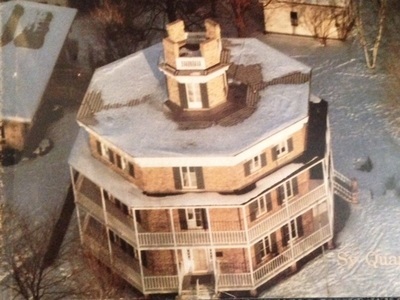
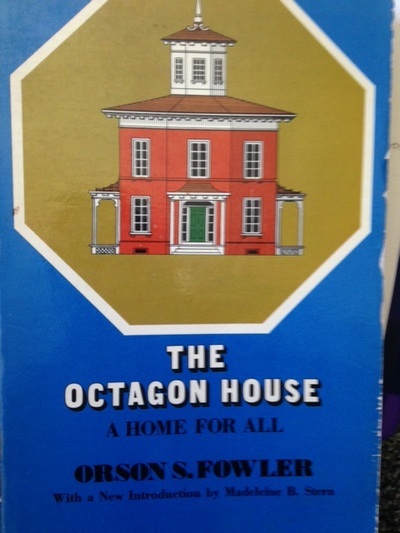
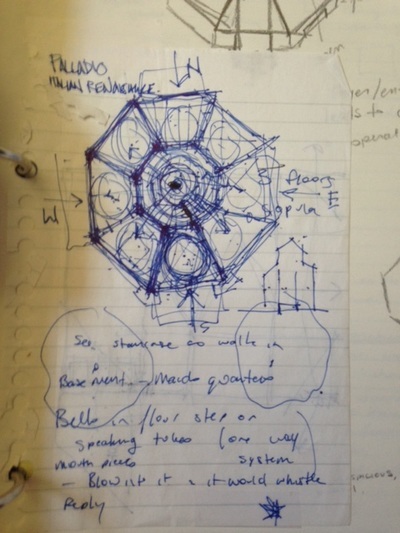
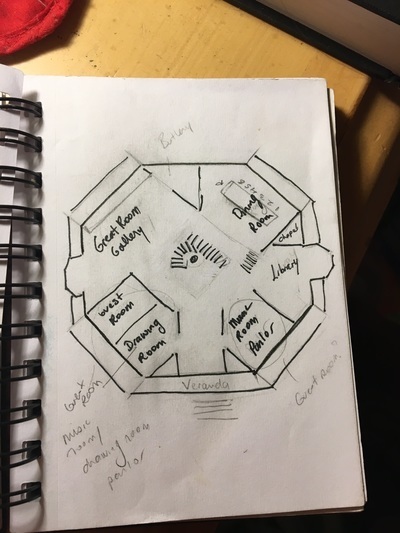 Miss Rose's manor in RELIANCE, ILLINOIS is based off an octagon house in Watertown, Wisconsin built by John Richards in 1854. The inside of the manor, however, is a composite of several other period houses designed by Mr. Orson Fowler, self-proclaimed expert in a number disciplines, including physiology and phrenology, the study of one's characteristics through the bumps on one's head. Fowler considered the octagon an ideal shape for maximizing health and well-being. While the design never gained the lasting popularity he predicted, there remain quite a few excellent examples, like the Watertown, Wisconsin house, which is still standing and open for visits. If you happen to live in the SF Bay Area, check out the McElroy Octagon House at 2645 Gough Street.
Miss Rose's manor in RELIANCE, ILLINOIS is based off an octagon house in Watertown, Wisconsin built by John Richards in 1854. The inside of the manor, however, is a composite of several other period houses designed by Mr. Orson Fowler, self-proclaimed expert in a number disciplines, including physiology and phrenology, the study of one's characteristics through the bumps on one's head. Fowler considered the octagon an ideal shape for maximizing health and well-being. While the design never gained the lasting popularity he predicted, there remain quite a few excellent examples, like the Watertown, Wisconsin house, which is still standing and open for visits. If you happen to live in the SF Bay Area, check out the McElroy Octagon House at 2645 Gough Street.
Published on August 23, 2016 13:17
July 31, 2016
Fruitful Territory
Published in Saint Mary's Magazine, July 2016 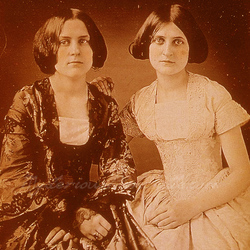 In 1848, the Fox sisters, Maggie and Kate, professed the ability to communicate, through a series of tips and taps called “rappings,” with spirits beyond the grave. Prank or not, their claims were taken seriously and championed by progressive Quakers, who also believed in other radical impossibilities—universal suffrage, for example, and abolition. During and after the Civil War, the spiritualist movement the sisters inspired, swept the bereaved nation, and spirit mediums, mostly women, discovered a niche in an economy largely closed to them.
In 1848, the Fox sisters, Maggie and Kate, professed the ability to communicate, through a series of tips and taps called “rappings,” with spirits beyond the grave. Prank or not, their claims were taken seriously and championed by progressive Quakers, who also believed in other radical impossibilities—universal suffrage, for example, and abolition. During and after the Civil War, the spiritualist movement the sisters inspired, swept the bereaved nation, and spirit mediums, mostly women, discovered a niche in an economy largely closed to them.
Were they frauds, feeding on the grief and willing ignorance of others? Did they indeed, have the power to piece and channel voices of loved ones? I’m not sure. I do know that as a child, I believed something no less fanciful than existence of spirits: I believed in History.
Imagine a complete and indestructible record of all people and deeds, good and bad; a chronicle kept, like a journal, in some kind of celestial library. Think of a stone monolith with a portico; imagine red brick. The important thing is that a record existed and could be called forth whenever needed. If this notion of History carried the threat of Christian judgment, it also contained the comforting illusion of permanence. Historians, guardians of the record, were unbiased, benevolent as librarians, and the books they wrote, accurate representations of the past.
I was nearly 22, living abroad as a Rotary Scholar in Wales before I recognized how porous, incomplete, and subjective the record was, how full of gaps and omissions, at least the human record. Part of my scholarship required I travel, giving lectures on the California Gold Rush at Rotary Clubs through the Welsh midlands. No one seemed to care that I, an aspiring writer, had no formal education in history. I was from California; proviso enough for my Welsh hosts. Driven by terror, I scoured textbooks and popular histories—beautiful tomes, full of maps, charts, dates of discoveries, pictures of young men with rakish grins—and wrote a presentation. It wasn’t terrible, but it was textbook and left my audiences, mostly male and over 60, politely uninspired. So was I, until one day a woman—a club member’s wife, white hair thinning on top—raised her hand.
“What about women?” she asked. “Were there women in the Gold Rush?”
I don’t remember where on the Welsh coast the club was—Aberaeron maybe, or Fishguard—but I remember that question. With my naive faith in history, it was a question I’d never thought to ask.
I closed the textbooks. I went back to the library. I went looking for women. They weren’t easy to find but their untold stories, once discovered—in small press histories, in memoirs, and journals, many of them fragmented and incomplete—became the foundation of my first two novels Crown of Dust and Reliance, Illinois.
Writing those books I learned that women’s history is fruitful territory for fiction. This might seem odd given the historical record overwhelmingly privileges men, conquest, and the spectacle of war. Women, when they appear, are side notes, or exceptions. Beyond three poles of existence—birth, marriage, and death—their stories remain largely undocumented and inconsistent; a fossil record of heirlooms, which borrowing Virginia Woolf’s lament, “lies at present locked in old diaries, stuffed away in old drawers, half-obliterated in the memories of the aged.”
But for a writer, nothing is as attractive as a lost or untold story; and a fiction writer with the patience to dig through hard to find, intimate and sometimes unreliable sources, is permitted to fill in with imagination what the record leaves out. She has freedom to speculate and create fully conceived characters from an amalgam of people about whom little might be individually known. What the facts of history provide is the landscape of a life and the skeleton of a story. Like spirit rappers before her, she uses that skeleton and those small telling effects she discovers to build a plot, to summon lives lost in time, and give them voice.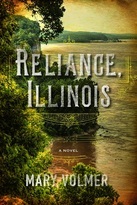
 In 1848, the Fox sisters, Maggie and Kate, professed the ability to communicate, through a series of tips and taps called “rappings,” with spirits beyond the grave. Prank or not, their claims were taken seriously and championed by progressive Quakers, who also believed in other radical impossibilities—universal suffrage, for example, and abolition. During and after the Civil War, the spiritualist movement the sisters inspired, swept the bereaved nation, and spirit mediums, mostly women, discovered a niche in an economy largely closed to them.
In 1848, the Fox sisters, Maggie and Kate, professed the ability to communicate, through a series of tips and taps called “rappings,” with spirits beyond the grave. Prank or not, their claims were taken seriously and championed by progressive Quakers, who also believed in other radical impossibilities—universal suffrage, for example, and abolition. During and after the Civil War, the spiritualist movement the sisters inspired, swept the bereaved nation, and spirit mediums, mostly women, discovered a niche in an economy largely closed to them.Were they frauds, feeding on the grief and willing ignorance of others? Did they indeed, have the power to piece and channel voices of loved ones? I’m not sure. I do know that as a child, I believed something no less fanciful than existence of spirits: I believed in History.
Imagine a complete and indestructible record of all people and deeds, good and bad; a chronicle kept, like a journal, in some kind of celestial library. Think of a stone monolith with a portico; imagine red brick. The important thing is that a record existed and could be called forth whenever needed. If this notion of History carried the threat of Christian judgment, it also contained the comforting illusion of permanence. Historians, guardians of the record, were unbiased, benevolent as librarians, and the books they wrote, accurate representations of the past.
I was nearly 22, living abroad as a Rotary Scholar in Wales before I recognized how porous, incomplete, and subjective the record was, how full of gaps and omissions, at least the human record. Part of my scholarship required I travel, giving lectures on the California Gold Rush at Rotary Clubs through the Welsh midlands. No one seemed to care that I, an aspiring writer, had no formal education in history. I was from California; proviso enough for my Welsh hosts. Driven by terror, I scoured textbooks and popular histories—beautiful tomes, full of maps, charts, dates of discoveries, pictures of young men with rakish grins—and wrote a presentation. It wasn’t terrible, but it was textbook and left my audiences, mostly male and over 60, politely uninspired. So was I, until one day a woman—a club member’s wife, white hair thinning on top—raised her hand.
“What about women?” she asked. “Were there women in the Gold Rush?”
I don’t remember where on the Welsh coast the club was—Aberaeron maybe, or Fishguard—but I remember that question. With my naive faith in history, it was a question I’d never thought to ask.
I closed the textbooks. I went back to the library. I went looking for women. They weren’t easy to find but their untold stories, once discovered—in small press histories, in memoirs, and journals, many of them fragmented and incomplete—became the foundation of my first two novels Crown of Dust and Reliance, Illinois.
Writing those books I learned that women’s history is fruitful territory for fiction. This might seem odd given the historical record overwhelmingly privileges men, conquest, and the spectacle of war. Women, when they appear, are side notes, or exceptions. Beyond three poles of existence—birth, marriage, and death—their stories remain largely undocumented and inconsistent; a fossil record of heirlooms, which borrowing Virginia Woolf’s lament, “lies at present locked in old diaries, stuffed away in old drawers, half-obliterated in the memories of the aged.”
But for a writer, nothing is as attractive as a lost or untold story; and a fiction writer with the patience to dig through hard to find, intimate and sometimes unreliable sources, is permitted to fill in with imagination what the record leaves out. She has freedom to speculate and create fully conceived characters from an amalgam of people about whom little might be individually known. What the facts of history provide is the landscape of a life and the skeleton of a story. Like spirit rappers before her, she uses that skeleton and those small telling effects she discovers to build a plot, to summon lives lost in time, and give them voice.

Published on July 31, 2016 14:03



